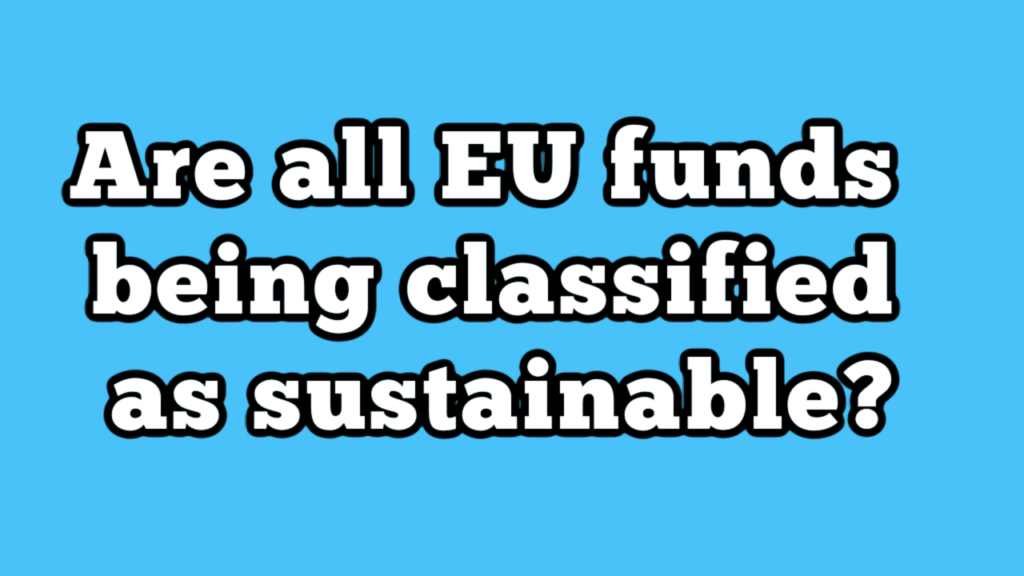Are all EU funds being classified as sustainable?

Here’s a note from Trym Riksen:
I made a short survey of the most sustainable funds in the EU. What did I find?
The analysis reveals that the fund management industry classifies all companies in the world as sustainable. This raises an important question: Is the aggregate behaviour of fund managers in line with the marketing and regulation of what is supposed to be the most sustainable funds?
When I went through the holdings of equity funds that are classified as Article 9 under the EU’s Sustainable Finance Disclosure Regulation (SFDR) regulation, one specific pattern emerged quickly: These funds own practically every company in the MSCI World index.
What are the Article 9 funds supposed to be? The intention of the EU’s Sustainable Finance Disclosure Regulation (SFDR) is to avoid greenwashing as well as make it easier for customers to find funds that are really sustainable.
Article 9 funds are often called «dark green», intended for impact-oriented investors. These funds are part of the most stringent SFDR regulation. Under Article 9 sustainable investments include any «economic activity that contributes to an environmental (…) or (…) social objective». Additionally, those acitivties are not to cause «significant harm» and companies are to follow «good governance practices».
I went through about 70 Article 9 equity funds out of a list of more than 300 such funds and found that those 70 funds own 97 percent of the names in the MSCI World index. In other words, the financial industry defines all the world’s companies as sustainable.
The French say that plus ça change, plus c’est la même chose; the more it changes, the more it’s the same thing.
Has the new EU regulation really changed anything?
Is it bad regulation on the part of the EU that the dark green Article 9 funds collectively define all the world’s companies as sustainable?
Or is the financial industry’s aggregate behaviour worrisome?
What do You think?
